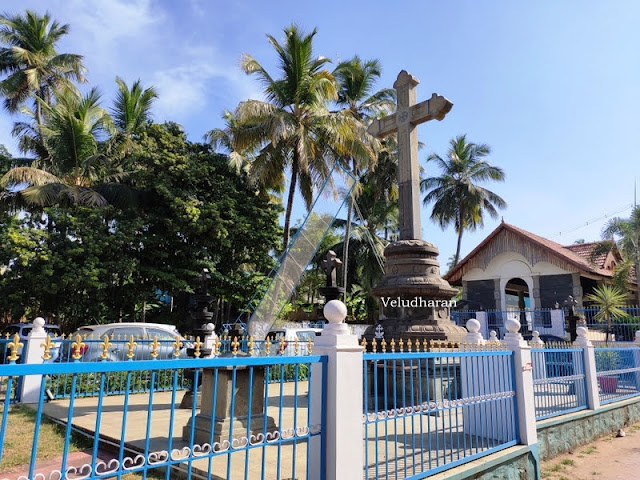26th January 2020.
The visit to this Christian Church at Thiruvithamcode
in Kanyakumari District was a part of Nanjil Nadu Heritage Walk organized by
Yaaooyaakay and Celebrate Kanchi in association with Tamil Nadu Tourism and
Development Department, Kanyakumari, scheduled on 24th to 26th
January 2020.
This was the 2nd temple’s visit on the third day after
Thiruvithamcode Sree Neelakanda swamy
Temple. This place is being spell in different ways such as Thiruvithancode,
Thiruvithankodu, Thiruvithamcode, etc.
THIRUVITHAMCODE ARAPPALLY - Usually the word Aram is used in Jainism and
Arapalli is that one, School which teaches,
good habits. Jainism was flourished in Kanyakumari, especially between 3rd
Century to 7th Century. During that time Jain monks practiced
thanams / gifts like Education, food,
oushadham / medicines. Jains calls these are Aram – அறம். Since St Thomas also teaches the principles of
Jesus, this place / Church might have been called as Arapally.
The Church claims to be the world’s oldest living churches in India and believed to be built by St. Thomas, known
as the apostle of India in 57 CE ( Actual year is not known ) and the Cross was
carved by him. The Church is being called in different names like Thomaiyar
Kovil, St. Marry’s Orthodox Church, Amalagiri Church and Thiruvithamcode Arappally.
It is also believed that this Church was built
during Kerala King Perum Chottu Uthiyan
Cheralathan. But there is no evidence to prove the same. The church might have
been built in different stages. The entrance arch is built with stone beams and
pillars. The beam has the bas-relief of Cross and two persons in worshiping posture. A
small cross is on the top of the arch. A Kerala style stone lamp is erected
after the entrance arch. The alter is very simple. The main alter portion was
built with granite stones quarried locally. The alter portion and prayer hall are supported with pillars & pothyal /
Capital ( like Hindu Temples ). The roof
is slope on both sides and paved with mangalore tiles. The entrance to the
prayer hall from front hall is with stone door jambs and the lintel has the
Christian related bas-reliefs. There are two side entrances near the alter portion. The Church is 45 ft in
length, 15 feet wide and 10 feet high.
The Church’s Alter, baptism basin and incense burner
are believed to be from Portuguese. On all the three sides new building like,
residence, assembly hall, library and office rooms were built. A stone Cross of about 20 feet tall with a
pedestal is erected in front of the Church. Jesus life incidents are carved on
the pedestal. In Additions to this there is a tomb on the right side of the
Church. The names of past Pastors, Rev. Fr Yacoob, Rev. Fr. Alexander, Rev. Fr. Konattu Yacob, Very Rev. Fr. K V Gheevarghese Ramban, 14-07-1890 - 16-07-1970 are inscribed on a single tomb.
A single grave of the past Pastors
As per the Historians the original Church was built
under the patronage of King of Thiruvithamcode. The same was found dilapidated
condition about 80 years back and the same was reconstructed to the present
state by the late Rev. Fr. Koottumkal Geevarghese Ramban. It is told that this
Church was reconstructed more than 5
times. This Church is being maintained by Malankara Orthodox Syrian Church. On
16th December 2007, Catholicos of East, Baselios Marthoma Dydimas
I, declared as a St. Thomas International Pilgrim Centre.
CONTACT
DETAILS.
The land line +91 4651 250 216 may be contacted for
further details.
HOW TO
REACH:
The Place Thiruvithamcode ie about 2 KM from Thuckalay,
25 KM from Nagercoil, 35 KM from Kanyakumari, 107 KM from Tirunelveli, 260 KM
from Madurai and 800 KM from Chennai.
Nearest Railway Station is Nagercoil.
LOCATION: CLICK HERE
A New building
A Stone bowl
--- OM SHIVAYA NAMA---


























































